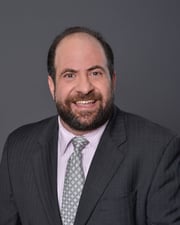 Notable shifts in asbestos litigation have implications for manufacturing companies that find themselves at risk of toxic tort lawsuits. In this Q&A, Malcolm Brisker, a partner at Goodell DeVries and a leader in toxic tort litigation, explores several common questions about the new landscape for these types of cases.
Notable shifts in asbestos litigation have implications for manufacturing companies that find themselves at risk of toxic tort lawsuits. In this Q&A, Malcolm Brisker, a partner at Goodell DeVries and a leader in toxic tort litigation, explores several common questions about the new landscape for these types of cases.
Malcolm has more than two decades of experience in defending companies in litigation involving, among other things, alleged asbestos, silicosis, coal mine dust, mold, and lead paint exposure. He serves on the working group judicial committee for asbestos litigation for the Circuit Court for Baltimore City and on the steering committee for Asbestos Litigation in the District of Columbia.
Malcolm leads Goodell DeVries's Asbestos Subgroup and handles a significant portion of the firm's asbestos litigation defense practice. Following the departure of a fellow partner earlier this year, Malcolm has expanded his work with product manufacturers, contractors, suppliers, and premises owners and was appointed to a committee for expert witness development for a global manufacturer.
Q: With traditional asbestos litigation giving way to talc filings, how is the plaintiff demographic changing?
A: The demographic of plaintiffs is getting younger. This is partly due to the fact that mesothelioma is being diagnosed earlier and, therefore, those plaintiffs are younger. We are also seeing mixed exposures with talc and asbestos both being pursued, which is causing younger plaintiffs to file lawsuits. Additionally, we are seeing more female plaintiffs in growing numbers of cases from take-home exposures, as well as talc exposures, from make-up and powder products.
Q: How are plaintiffs' arguments evolving as science fails to prove causal links for very low dose asbestos exposures?
A: Plaintiffs are making their arguments simpler so that juries can understand them. They are using asbestos as a general term and not going into fiber type as much as they used to. Now, they are trying to use experts who will opine that any asbestos exposure can cause mesothelioma and other cancers, and that almost any exposure is a significant exposure.
Q: What trends have we seen in more traditional asbestos litigation over the last few years?
A: For more traditional asbestos cases, we have seen plaintiffs pursue lower doses exposure for caulk and adhesive products, as well as electrical component products, which have no fiber release. Plaintiffs are filing lawsuits for limited exposures and attempting to hide alternative exposures from Navy and insulation product exposures that plaintiffs likely had. However, in the litigation, plaintiffs try to push for the minimal exposures for viable defendants. Therefore, there is more of a need for investigation of alternative exposures that plaintiffs try to hide, and pursue only in the bankruptcy arena.
Q: What are the trends for newer mesothelioma cases?
A: We are seeing more cases against fewer defendants, as more defendants go into bankruptcy. Plaintiffs are pursuing smaller and smaller exposures and trying to capitalize on the remaining defendants that exist. Plaintiffs are also going after different targets, including automobile dealerships for brakes that were sold and respiratory protection manufacturers for respiratory protection equipment. They are also trying to pursue lower dose defendants in an effort to capitalize on the increase in visibility of lawyers to get cases that may have been deemed to be idiopathic in the past. We are also seeing more cases of less aggressive forms of mesothelioma being filed, such as well differentiated papillary mesothelioma, and cases involving women who have secondary exposures to mesothelioma. These cases are pursued more vigorously than they were in the past, when there was a larger body of mesothelioma cases that were pursued in litigation.
If you have questions about your company's risk of asbestos litigation, please contact Malcolm Brisker at msb@gdldlaw.com.
See Malcolm's Q&A on virtual asbestos litigation.



